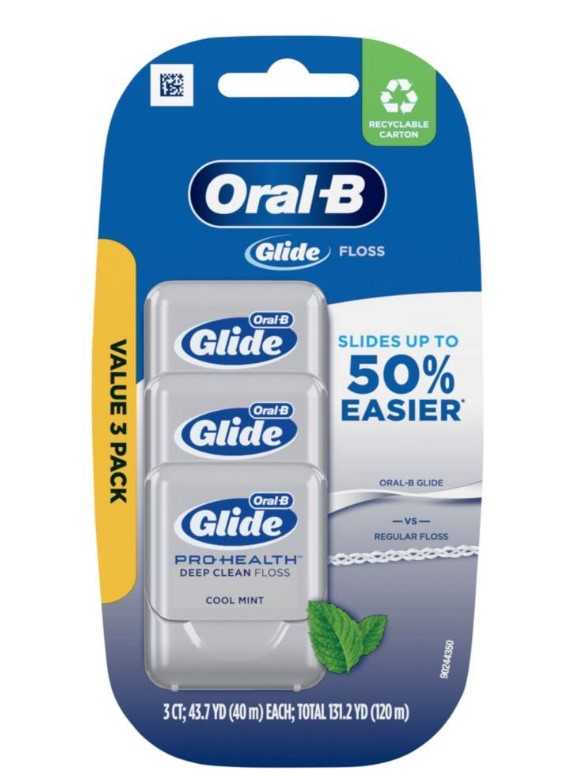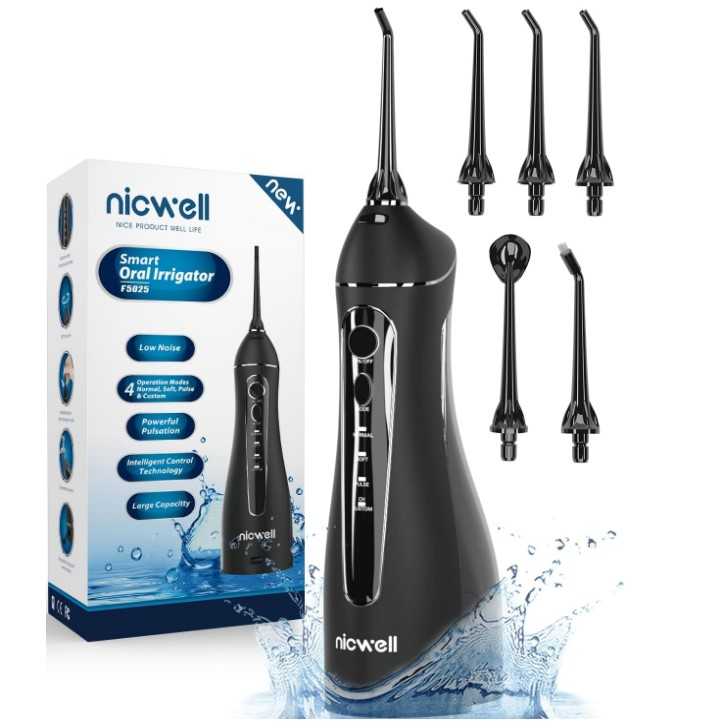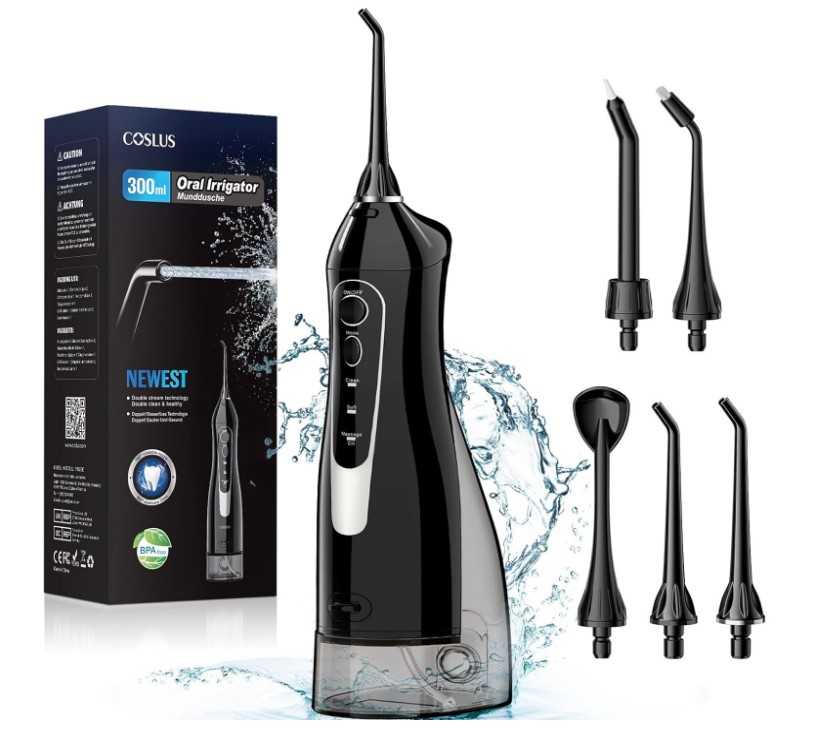Dental floss and other dental accessories usage is essential for maintaining good oral hygiene. By removing food particles and plaque from the spaces between teeth, flossing helps shield teeth from decay and gum disease. Different forms of dental floss are available to suit different needs and preferences.
These types include waxed, unwaxed, flavored, and tape. As alternatives for cleaning in between teeth and along the gum line, consider using water flossers and interdental brushes. Mouthwash kills bacteria and freshens breath, making it a great addition to flossing.
Using a toothpick can help loosen food particles that are difficult to move. Maintaining good oral hygiene helps to maintain general dental health by preventing problems like cavities and gum inflammation.
This includes flossing on a regular basis and using dental accessories. For best outcomes, dental professionals advise including these items in regular oral hygiene practices.
Types of Dental Floss
1. Traditional Dental Floss
Because it is readily available and effective, traditional dental floss continues to be a vital component of oral hygiene regimens. Most people are familiar with it; it is made of a thin, stringy material made of silk or nylon that makes it easy to move between teeth and along the gum line.
Our Pick – Oral-B Glide Pro-Health Dental Floss, Deep Clean Cool Mint Flavor, 40 M, 3 Count

Its adaptability allows for the removal of plaque and debris from teeth of different shapes and spacing. People can select between the waxed and unwaxed types according to comfort and personal taste.
While the unwaxed variant gives a firmer hold for more vigorous cleaning, the waxed variety glides more smoothly between teeth. When combined with routine brushing and in-office dental care, traditional dental floss is an affordable and effective tool for preserving ideal oral health.
Its ease of use belies its significant contribution to the prevention of gum disease, cavities, and the promotion of general dental wellness.
2. Water Flosser
An efficient and contemporary substitute for conventional dental floss is a water flosser. These gadgets, which function by pulsating water, offer a thorough yet pleasant cleaning experience.
Our Pick – Nicwell Water Dental Flosser Teeth Pick

Plaque, dirt, and food particles are effectively removed from between teeth and along the gum line by the water stream, which reaches regions that are sometimes hard to reach with ordinary floss.
Water flossers have many benefits, one of which being its adaptability to those wearing braces, implants, or other dental appliances. Furthermore, water flossers are kinder to delicate gums than standard flossers, lowering the possibility of irritation or discomfort.
A lot of the devices have pressure settings that can be changed to suit the user’s comfort level and particular dental requirements. Water flossers help maintain better dental hygiene by encouraging healthier gums and breath. Use them on a daily basis.
3. Electric flosser
Electric flossers automate the process with mild vibrations, revolutionizing conventional flossing techniques. Without the human dexterity needed for traditional flossing, this handheld gadget effectively moves a thin, stringy substance between teeth to remove food particles and plaque.
Our Pick – COSLUS Water Dental Flosser Teeth Pick: Portable Cordless Oral Irrigator 300ML Rechargeable

Its vibrating action promotes a thorough clean, lowers the incidence of gum disease and cavities, and improves the removal of plaque and gum health. Many electric flossers have movable settings that let users tailor the flossing experience to their preferred sensitivity.
For people of all ages, electric flossers provide comfort and ease of use thanks to their ergonomic designs and user-friendly features. Purchasing an electric flosser can help to maintain long-term dental health and cleanliness by streamlining oral hygiene practices, promoting consistent flossing behaviors.
Dental Floss vs. Water Flosser
It’s critical to understand that there is no one-size-fits-all solution when deciding whether to use dental floss or a water flosser. Your decision should be in line with your particular requirements and tastes.
A water flosser may work better for those wearing braces or other orthodontic appliances since it can reach places that regular floss can’t. Conversely, soft, waxed floss reduces gum irritation and may be beneficial for people with sensitive teeth.
In the end, it all comes down to exploration. Finding the floss kind that works best for you might be accomplished by trying out various varieties. You may customize your oral care regimen to maximize comfort and efficacy and ultimately achieve a healthier smile by investigating your alternatives.
How to Choose the Right Dental Floss
Your Individual Needs
It’s important to take your demands into account while choosing dental floss. Your decision may be significantly impacted by elements like wearing braces or other orthodontic appliances, having sensitive teeth, or both.
Using a soft or gentle floss will help reduce discomfort and properly clean in between teeth if you have sensitive teeth. If you wear braces or other orthodontic appliances, search for floss that is specifically made to go around brackets and wires without damaging them.
Furthermore, for better coverage, people with wider gaps between their teeth would choose thicker floss or dental tape. You may guarantee a comfortable and successful oral hygiene regimen that contributes to your dental health objectives by customizing your dental floss selection to your unique needs.
Seeking advice from your dentist can also be very helpful in determining which floss best suits your needs.
The Type of Floss
Think about the many kinds of dental floss that are available while choosing. Because it works so well at cleaning between teeth, traditional dental floss composed of nylon or Teflon is still a popular option.
Oral irrigators, sometimes referred to as water flossers, are perfect for those wearing braces or dental implants since they use a stream of water to clean the spaces between teeth and along the gum line.
Particularly for people with restricted dexterity, electric flossers also known as powered flossers or flossing toothbrushes offer efficiency and ease. Every floss type has benefits, so it’s critical to select the one that best fits your needs and preferences in terms of oral health.
You can determine which sort of dental hygiene is most comfortable and efficient by experimenting with different kinds.
The Price
When considering the price of dental floss, there’s a wide spectrum to choose from, ranging from budget-friendly options to more expensive varieties.
While some dental flosses may come with advanced features or specialized coatings that justify a higher price point, there are also effective options available at more affordable prices. It’s essential to strike a balance between quality and affordability.
Investing in a reliable dental floss that fits within your budget ensures you can maintain consistent oral hygiene practices without overspending. Remember, the most expensive floss isn’t always the best choice for everyone.
Evaluate your needs and preferences alongside the features offered by different floss brands to find the perfect balance of quality and cost-effectiveness for your oral care routine.
How to Floss Properly
Flossing is an important part of a healthy dental care routine. By flossing regularly, you can help to remove plaque and food particles from between your teeth that brushing can’t reach. This can help to prevent gum disease and cavities.
Here are some tips for flossing properly:
- Use a soft, waxed floss.
- Floss between your teeth in a back-and-forth motion.
- Floss at least once a day, preferably before bed.
- If you have braces or other orthodontic appliances, use a floss threader to help you reach the areas that are difficult to floss.
Flossing Tips for Kids
Flossing is an important part of a healthy dental care routine for kids. By flossing regularly, kids can help to prevent gum disease and cavities.
Here are some tips for flossing kids:
- Start flossing when your child is young.
- Make flossing a fun activity.
- Use a soft, waxed floss.
- Floss at least once a day, preferably before bed.
- If your child has braces or other orthodontic appliances, use a floss threader to help you reach the areas that are difficult to floss.
Benefits of Flossing
Flossing has many benefits for your teeth and gums. Some of the benefits of flossing include:
- Prevents gum disease: Flossing helps to remove plaque and food particles from between your teeth that brushing can’t reach. This can help to prevent gum disease, which is a serious problem that can lead to tooth loss.
- Prevents cavities: Flossing helps to remove plaque and food particles from between your teeth that can cause cavities.
- Strengthens your teeth: Flossing helps to remove plaque and food particles from between your teeth that can damage the enamel on your teeth
Strengthens your teeth: Flossing helps to remove plaque and food particles from between your teeth that can damage the enamel on your teeth. This can help to strengthen your teeth and prevent them from breaking or chipping.
Improves your smile: Flossing helps to remove plaque and food particles from between your teeth that can cause your teeth to look yellow or stained. This can help to improve your smile and make you feel more confident.
Conclusion
In conclusion, dental floss and other dental accessories are essential for maintaining excellent oral hygiene, which is critical for general health and wellbeing.
Through our investigation, we have learned the value of using mouthwash and interdental brushes as additional tools, the relevance of frequent dental checkups, and the importance of good flossing practices.
People who adopt a thorough oral hygiene regimen that incorporates these key components can successfully fight plaque accumulation, stop gum disease, and protect their teeth from decay. In the end, maintaining good dental health starts with a dedication to diligent and regular oral hygiene habits.
Everyone can have a long-lasting, healthy, and brilliant smile with the correct resources and commitment. Recall that maintaining good dental health is an investment in your whole wellbeing.
How often should I floss my teeth and what is the proper technique?
Flossing is a crucial component of good oral hygiene because it gets rid of food particles and plaque that toothbrushes are unable to reach in the spaces between teeth and along the gum line. For best results, floss your teeth at least once a day, preferably right before bed to keep your mouth fresh all night.
To achieve maximum efficiency, it is imperative to utilize the appropriate flossing technique. First, take about 18 lengths of dental floss, tear off about 1 to 2 inches of it, and wound most of it around your middle fingers.
Using a back-and-forth motion, carefully slide the floss between your teeth, forming a C shape around each tooth and slipping it just under the gum line.
Make sure to clean every tooth on both sides, and for every interdental gap, use a new piece of floss. You may maintain a straight grin and encourage healthy gums by using this approach on a regular basis.
What are the benefits of using dental floss and how does it help prevent cavities and gum disease?
Dental floss has several advantages and is essential for preserving good oral health. First off, flossing cleans the spaces between teeth and the gum line, which may be difficult for toothbrushes to reach. It also eliminates plaque and food particles from these places.
Dental floss lowers the risk of tooth decay and helps stop cavities from forming by getting rid of these particles. Furthermore, because plaque buildup is a major cause of gingivitis and periodontitis, regular flossing helps to prevent gum disease.
You may improve the cleanliness of your mouth and support strong gums and teeth by adding flossing to your daily oral hygiene regimen. Maintaining your general health and reaching a brilliant smile depend on frequent dental check-ups, brushing, and flossing.
Are there different types of dental floss available and how do I choose the best one for my needs?
There are many different dental floss options available, each catered to different needs and interests. Conventional nylon floss is flexible and efficient in cleaning between teeth; it is available in waxed and unwaxed varieties.
Waxed floss can slide more smoothly for people with braces or teeth that are closely spaced apart. On the other hand, people with delicate gums might like softer flosses, including those composed of silk or PTFE (polytetrafluoroethylene).
For people with larger spaces between their teeth, dental tape which is flatter and wider than regular floss may be the solution. Moreover, floss picks and disposable flossers are convenient and simple to use, which makes them great options for people with dexterity problems or hectic schedules.
When choosing the ideal dental floss for your requirements, take into account elements such as tooth spacing, gum sensitivity, and individual preferences for comfort and texture. Keep in mind that the floss that works best for you is the one you’ll use on a regular basis to maintain good oral hygiene.
What other dental accessories can help improve oral hygiene, such as interdental brushes or mouthwash?
Several other dental accessories, in addition to dental floss, can greatly improve oral hygiene. Small and thin, interdental brushes are used to clean in between teeth and around dental equipment. They work especially well for people who have wider spaces between their teeth, wear braces, or have dental implants.
By getting rid of plaque and debris in places that regular floss could miss, these brushes help stop gum disease and tooth decay. Another useful tool that can enhance your dental hygiene regimen is mouthwash.
In addition to improving breath quality, it also works to lessen oral bacteria and plaque, adding another line of defense against oral health issues. For the greatest advantages, look for mouthwashes with fluoride or antibacterial qualities.
You can have a healthier mouth and a more radiant smile by including these items in your regular oral hygiene routine.
How often should I replace my toothbrush and how can I ensure I am properly cleaning my teeth and gums at home?
Ensuring your toothbrush remains effective is essential for maintaining optimal oral health. Replace your toothbrush every three to four months or sooner if the bristles become frayed or worn. Additionally, after recovering from illness, swap out your toothbrush to prevent reinfection.
To properly clean your teeth and gums, adhere to a consistent brushing routine twice daily for two minutes each time. Angle your brush at a 45-degree angle towards the gum line, using gentle circular motions to remove plaque and debris. Don’t forget to brush the inner surfaces, outer surfaces, and chewing surfaces of your teeth.
Complement your brushing routine with daily flossing to reach areas between teeth that brushing alone may miss. Lastly, consider incorporating dental accessories like interdental brushes or water flossers for a more comprehensive clean. With these simple steps, you can maintain a bright, healthy smile for years to come.
